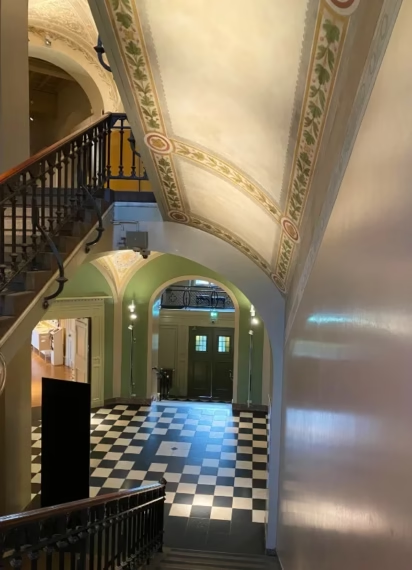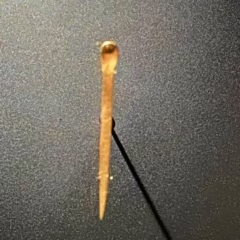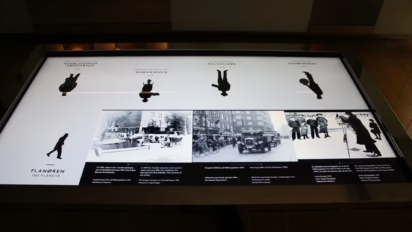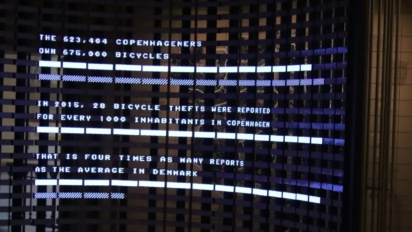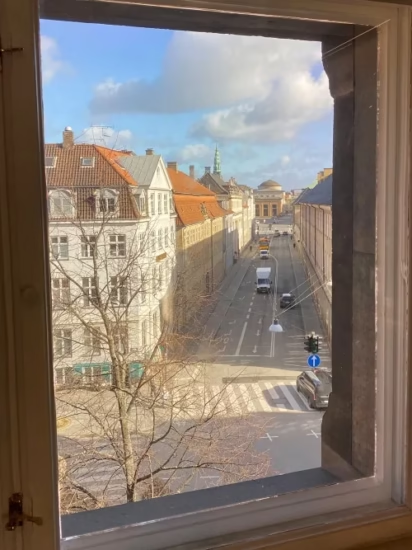The Københavns Museum is the local history museum of Copenhagen. It is a small museum but fun to visit.

The Museum of Copenhagen (Københavns Museum) covers the history of the city from prehistoric times to the present. It reopened in 2020 with a modern, well-presented exhibition that is easy to follow and a good introduction to the history of the Danish capital. Modern interactive displays, graphics, art, and historical objects bring the history of the Danish capital to life. It is a relatively small museum but fun to visit. The Copenhagen Card is valid.
Exhibition in the Museum of Copenhagen
The permanent exhibition in the Museum of Copenhagen is spread over the top two floors of the museum and organized in the following sections:
- A Capital Rises — up to 1660
- A Fortified City — 1660 – 1850
- The Modern City — 1850 – 1950
- Debating the City — 1950 onwards
The Copenhagen Panorama — a large, modern, interactive scale model of the city of Copenhagen — is on the top floor
Temporary exhibitions are staged on the ground floor and might be the best reason to visit the museum multiple times.
All descriptions, video, and audio recordings are in both English and Danish. The descriptions are easy to follow and in some cases, visitors may actually wish for more detailed information. The museum is surprisingly small — the museum claims it is possible to rush through in half an hour but most visitors are like to spend an hour or a bit more in the museum.
The Museum of Copenhagen is by no means the cultural and academic tour de force of the National Museum of Denmark across the road that warrants several hours and preferable multiple visits to fully appreciate.
History of Copenhagen
It is easy to follow the history of Copenhagen in this museum — only main events and 14 key sites in the city are covered to explain development and life in the city.
Typical Danish, the exhibits range from historically significant items, e.g. the oldest use of the seal of Copenhagen in a document of 1254, to the almost banal, e.g. a 15th-century solid gold ear-pick (“ear and nail cleaner for the person with everything”). Also, while Bishop Absalon (1128-1201) is traditionally seen as the founder of Copenhagen, showing older archaeological finds next to his sculpture is a silent admission that historical knowledge has moved beyond 19th-century romantic fantasies.
A Fortified City
A large section of the museum is dedicated to the fortified city (1660-1850). During this period Denmark was mostly an absolute monarchy and Copenhagen was surrounded by city walls. The gates were locked at night — some of the huge keys are on display — and passports were controlled on arrival. The gates were only left open at night from 1821 onwards and the fortifications were mostly demolished in the mid-19th century.
In the fortified city section, an etching is brought to life with a life-size video presentation that draws visitors into the event — try the complicated greeting protocol of the era, or realize that all items of clothing, walking sticks, and colonial employees have social status and meaning in high society. It is also possible to try a sedan chair for size.
This section also covers the disasters that befell Copenhagen such as two major city fires (1728 and 1795), the last plague epidemic that killed 40% of Copenhagen’s population in 1711, the cholera epidemic that killed 4% in 1853, and the bombardment of the city in 1807 by the British navy that left thousands homeless and led to amongst others the neo-classical Copenhagen Cathedral.
In the crime and punishment section, follow the remarkable life of the criminal and master jail-breaker Morten Frederiksen. Note the coins used in the poorhouse and the begging permits issued at times — street begging remains forbidden in modern Copenhagen. Life in Copenhagen away from the glamour of the royal court and upper society was often hard with the masses living in abject poverty.
Development of Modern Copenhagen
The modern city is explained on the top floor. Copenhagen finally burst out of the constraints of the city walls and experienced rapid growth during the 19th and 20th centuries. Poverty and squalor gradually gave way to wealth and eventually one of the happiest and most equalitarian societies on earth.
A large section is dedicated to the new technology and related new professions at the turn of the century (19th to 20th) such as bicycles, photography, trams, and telephone kiosks with historical displays and a large variety of photos and video. A popular display is an early example of the Dursley Pedersen wooden bicycle — although built in Britain it was designed by a Dane.
Copenhagen Panorama 3D-Model

The huge modern scale model of Copenhagen is beautifully presented. Lights can be activated to highlight landmarks.
A modern information data wall displays a variety of facts related to Copenhagen such as its famous bicycle statistics, e.g. 5.6 bicycles for every car in Copenhagen, more bicycles than inhabitants, and regrettably a bicycle theft rate of 28 per 1,000 — four times the Danish average. Unfortunately, the large amount of information is not available as a static display for fast readers, who would probably have appreciated more information than could be seen in a few minutes watching the constantly changing display.
Museum of Copenhagen Visitors Information
The opening hours of the Museum of Copenhagen are daily from 9:00 to 18:00 (closing at 21:00 on some Thursdays).
Admission is DKK90 for adults (free for the under 18s) and includes admission to the Thorvaldsens Museum and usually also the Nikolaj Kunsthal within the following 48 hours. An annual pass is DKK180.
Admission is free on Wednesdays.
One-hour guided tours in English, included in general admission, are available most weekends at 15:00.
The Museum of Copenhagen reopened in 2020 after around four years of closure so expect pent-up demand. Every school child in the city is likely to get a school trip here making visiting early, late, or during lunch a good idea for a quieter visit.
The Museum of Copenhagen (Københavns Museum), Stormgade 18, is a block or two from other central Copenhagen sights such as the Rådhus (town hall), Tivoli Gardens, Ny Carlsberg Glyptothek, the National Museum of Denmark, the Thorvaldsens Museum, and Christiansborg Palace.
